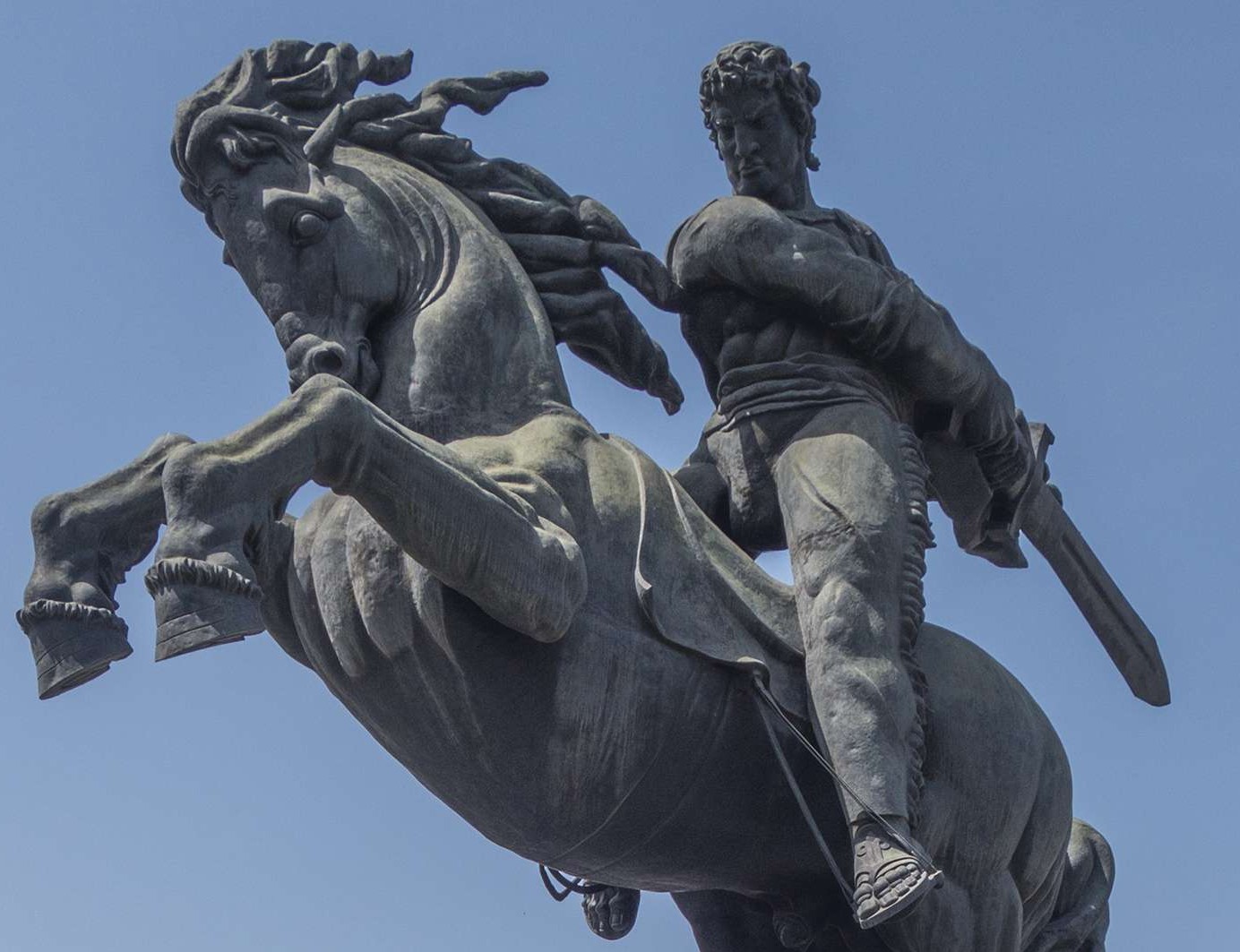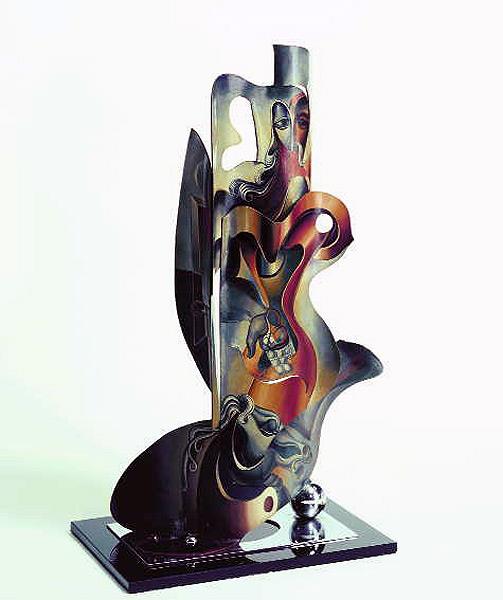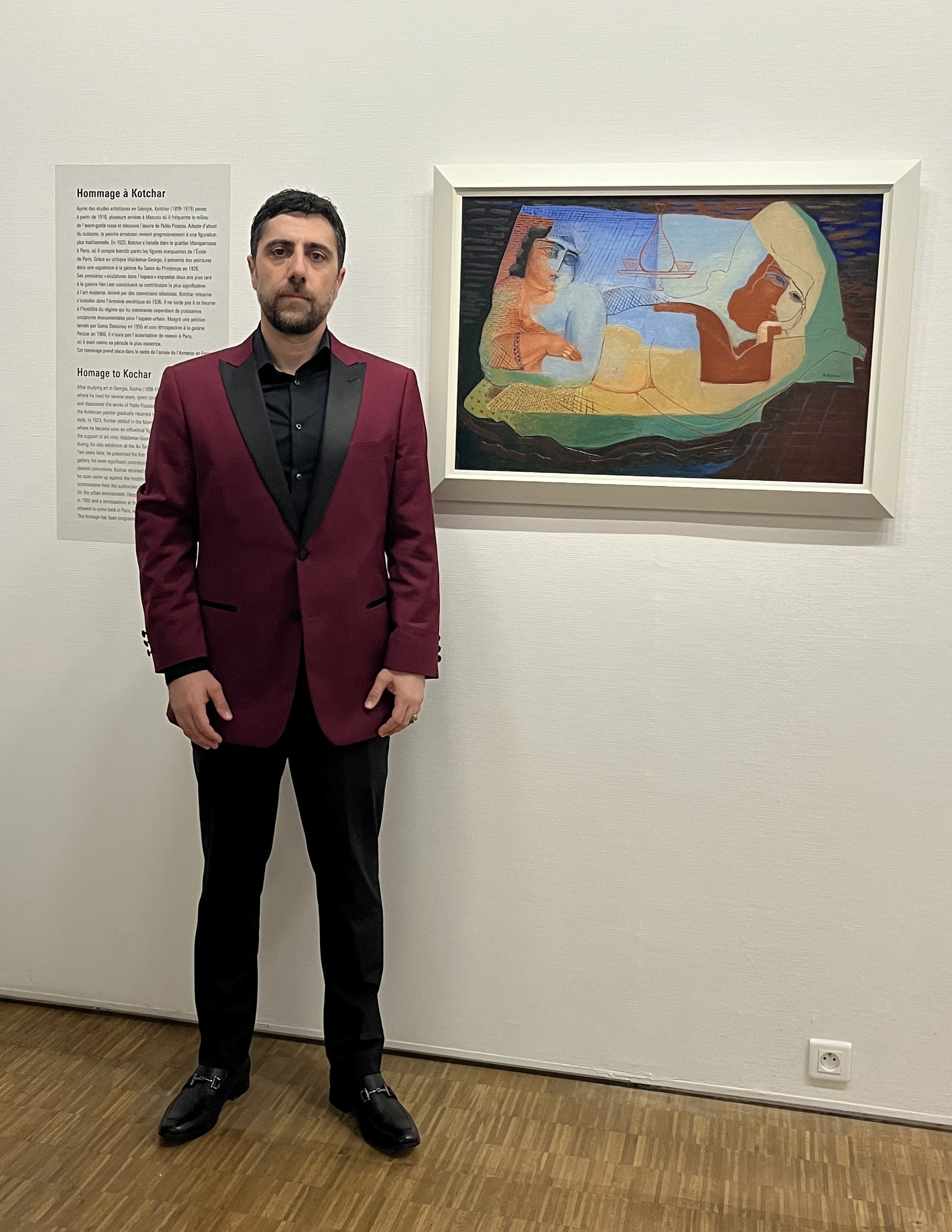
YERVAND KOCHAR
Artist and sculptor Yervand Kochar (1899–1979) remains one of the most significant figures of 20th-century modern art. During his years in Paris (1923–1936), he played a vital role in shaping the historical Avant-Garde movement. His artistic legacy from this period is a unique contribution to both Armenian and European culture.
Recognized among the era’s greatest artists—including Picasso, Braque, Arp, Léger, Miró, Delaunay, Kandinsky, and Chirico—Kochar earned a distinct place within the artistic vanguard.
In France, he pioneered a groundbreaking form of artistic expression, Painting in Space (Peinture dans l’Espace), hailed by leading art theorists as one of the greatest achievements of the Avant-Garde. This innovative approach incorporated time as the fourth dimension in painting, redefining spatial perception in art. In 1936, Kochar signed the Manifeste Dimensioniste, a landmark document heralding new aesthetic principles. The distinguished list of signatories—including Calder, Arp, Kandinsky, Delaunay, Duchamp, and Moholy-Nagy—underscores both the breadth of the Avant-Garde movement and Kochar’s vital role within it.
That same year, Kochar immigrated to Soviet Armenia, crossing the “Iron Curtain” into an era of Stalinist repression. The door to the West was closed forever. He faced imprisonment, persecution, and creative isolation. Yet, despite these hardships, Kochar infused Armenian art with the spirit of modernism, introducing innovative ideas and forward-thinking creative approaches. His monumental sculptures, David of Sassoun and Vardan Mamikonian, became enduring national symbols, embodying the strength and cultural identity of Armenia.
In 1984, the Yervand Kochar Museum was established in his former studio, preserving his artistic legacy. Today, his revolutionary Painting in Space can only be seen here and at the Centre Pompidou in Paris, alongside rare documents and invaluable artifacts that highlight his connection with the leaders of the Avant-Garde.





